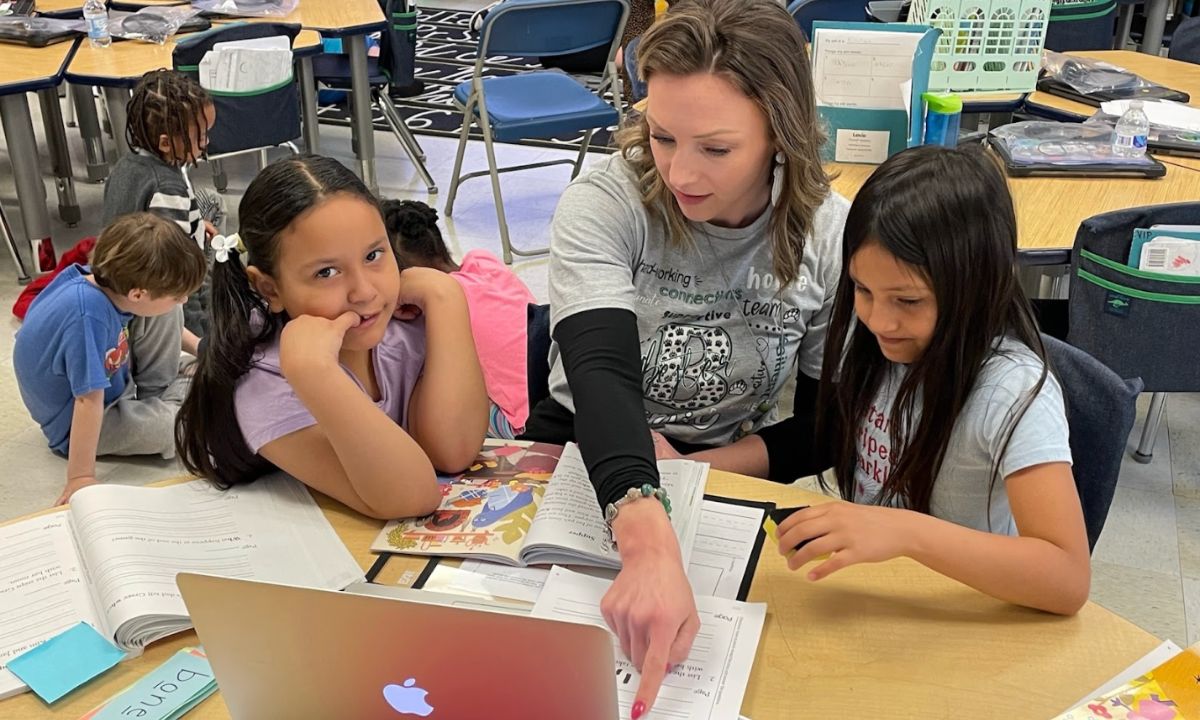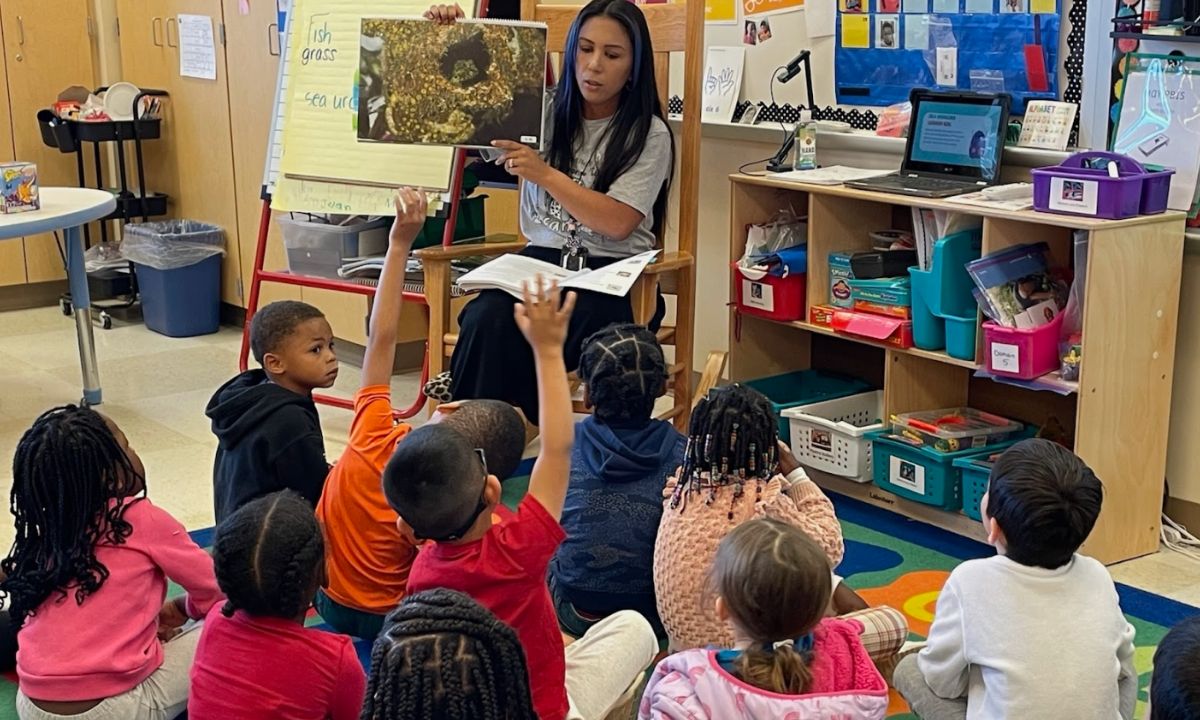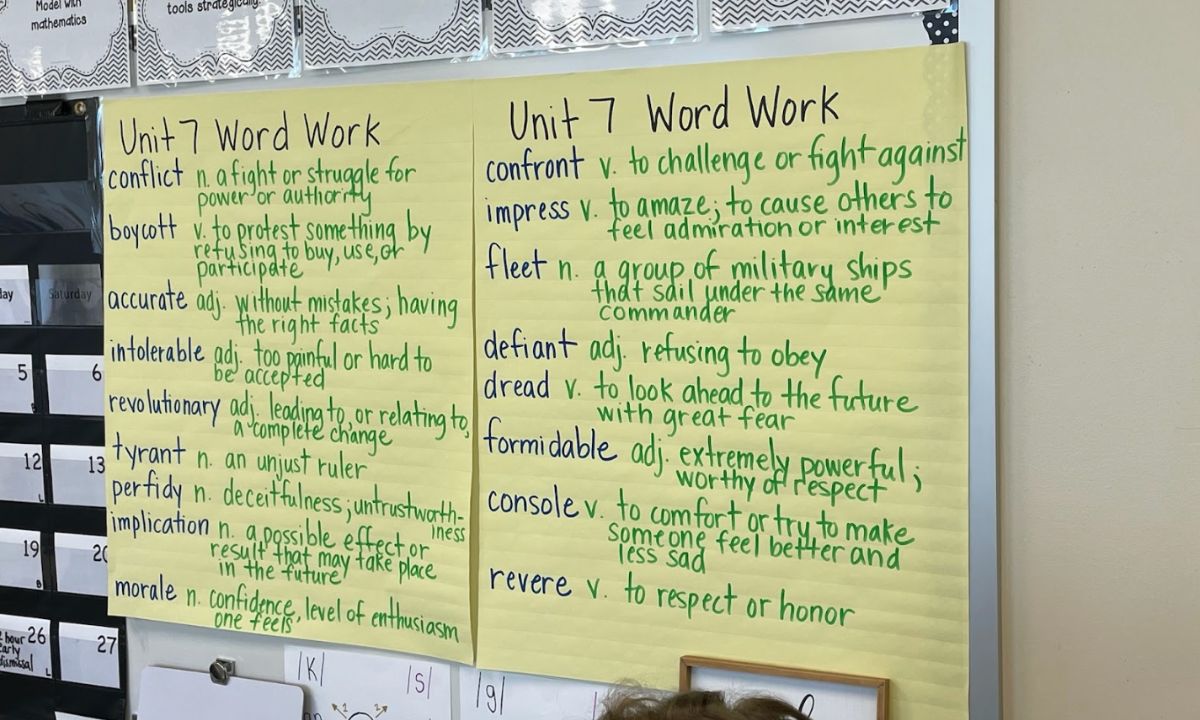Classroom Case Study: To Maximize the Impact of Curriculum Mandates, Follow the Science of Reading
First Person: Dr. Gary Willow writes about how he’s brought in support and built homegrown expertise to boost literacy skills in Maryland.

Get stories like these delivered straight to your inbox. Sign up for The 74 Newsletter
This is part two of a three-part series spotlighting school leaders across Maryland who have recently implemented high-quality literacy curricula. (See our prior installment) Gary Willow is Associate Superintendent for Curriculum and Instruction at Washington County Public Schools in Hagerstown; below, he shares how the district nurtured homegrown expertise and built community support to ensure the success of their curriculum initiative.
The “science of reading” is a trending topic in state legislatures and gubernatorial speeches — over the past decade, 38 states and the District of Columbia passed new laws or implemented new policies that require evidence-based literacy instruction. This past January, my home state of Maryland joined the list when the Board of Education required all schools and districts implement evidence-based literacy instruction by the 2024-25 school year.
This is a major shift for many districts, where leveled readers and balanced literacy have long ruled the day. It’s also more complex than a simple mandate, since the “science of reading” isn’t a single program or technique. To successfully bring research-backed reading instruction into the classroom, districts will need to identify and invest in high-quality materials and ensure teachers and communities are prepared to make sustainable, lasting change.
While advocates and educators have been engaged in wide-ranging conversations about reading proficiency in Maryland for many years, relatively few communities have undertaken the specific work of changing curriculum and instruction to follow the science of reading. Washington County Public Schools, where I lead curriculum and instruction as an associate superintendent, has been focused on this work since 2020. Districtwide, preschool and K–5 teachers are now using a new high-quality, knowledge-rich literacy curriculum: Amplify Core Knowledge Language Arts, or CKLA.
How did we do it?
We have learned a lot over these past few years. Bringing the science of reading to the classroom requires careful research, strong collaboration and consensus-building, aligned professional learning, and robust ongoing support for school leaders.
Study the Evidence
Washington County started this work with a clear look at kindergarten-achievement data, which showed that just 39 percent of students met benchmark targets in reading in 2019. It was evident that although everyone worked hard, our students were not reading as well as they should. That helped us reflect on our beliefs and practices and ask big questions. Teachers, coaches, and administrators can ask similar questions by looking at their own data as they consider what students stand to gain from new evidence-based literacy instruction.
It’s important to understand the evidence before adopting sweeping change. We established partnerships to ensure that we thoroughly understood the research and create a vision for local success. Through our first partnership with the Council of Chief State School Officers, we collaborated with Nell Duke to reflect on and elevate our approach to early literacy.
Duke, who is a member of the Scientific Advisory Committee at the Knowledge Matters Campaign, helped us look beyond leveled texts and shift toward instructional expectations aligned with the principles of the science of reading. For example, rather than encouraging students to read independently at their comfort level, our teachers could use a variety of strategies to engage students with appropriately rigorous texts that built on their knowledge of the world, such as read-alouds, partner reads, and activities to learn vocabulary specific to a theme or topic.
Co-Create Consensus
We also engaged TNTP to help facilitate our vision. A diverse group of participants, including elementary and secondary teachers, paraprofessionals, administrators, special-education teachers, and district leaders, worked together to identify our beliefs, priorities, and what would be needed to update reading instruction. We presented these ideas to school leaders, community stakeholders, and families, as well as our elected Board of Education. Through this transparent process, we created clear, shared beliefs and expectations for improved literacy instruction in Washington County.

That meant choosing a new curriculum, which would serve as the foundation and guide for our efforts. With the district’s English Language Arts leaders, Washington County teachers chose Amplify CKLA because it is both evidence-based and knowledge-rich. Through our research and work with Duke, we knew that content knowledge is essential for enhancing reading comprehension because it allows students to better connect with and understand text. Our vision-building community exercises were helpful in this step as well. Background knowledge helps students make meaningful inferences and draw on relevant prior knowledge, which is critical for deep comprehension and learning from reading — priorities for our students. Best of all, knowledge-building curriculums like Amplify CKLA are organized into units that explore a single topic, like farm animals or mythology, students can talk about what they are learning, since they are all reading about the same thing at the same time.
Prioritize Professional Learning
Washington County teachers had access to the new curriculum in the spring of 2023, nearly six months before implementation. Teachers participated in curriculum-based professional learning during the school day, as well as before and after school. Instructional leaders developed new protocols to practice and prepare units and individual lessons, and an instructional coach from Amplify offered support. Teachers have opportunities to study the curriculum, ask questions, and practice instructional techniques together.
In addition, the district purchased a training course for educators on evidence-based reading instruction techniques created by TNTP. The course emphasizes foundational skills and guides teachers on how to apply these principles in the classroom. District leadership, teachers, administrators, and paraprofessionals all completed the training to build a shared understanding of the science of reading.
Offer Ongoing Support for School Leaders
The success of any school-based initiative depends on the principal, who works with teachers daily and knows their staff and students best. We meet with our principals for a full day once a month, with half of that time dedicated to instruction and coaching. In addition, elementary-school principals routinely visit other schools to watch instruction and share observations with peers and Central Office staff. Principals also participate in quarterly data meetings where district and school leadership work together to analyze student achievement data. These structures create an ongoing dialogue focused on instructional excellence among principals and between principals and district leaders.

At the heart of these efforts is collaboration and a shared set of beliefs. Transitioning to a high-quality, knowledge-building curriculum and instruction based in the science of reading isn’t easy, and I am grateful for the efforts of our teachers, administrators, and central office staff. With their hard work, and by establishing partnerships, fostering open dialogues about data, and providing structured professional development, Washington County has created an environment where change can and has happened—proof positive for districts across Maryland and the country facing similar challenges in the months and years ahead.
Gary Willow is Associate Superintendent for Curriculum and Instruction at Washington County Public Schools in Hagerstown, MD.
Get stories like these delivered straight to your inbox. Sign up for The 74 Newsletter

;)